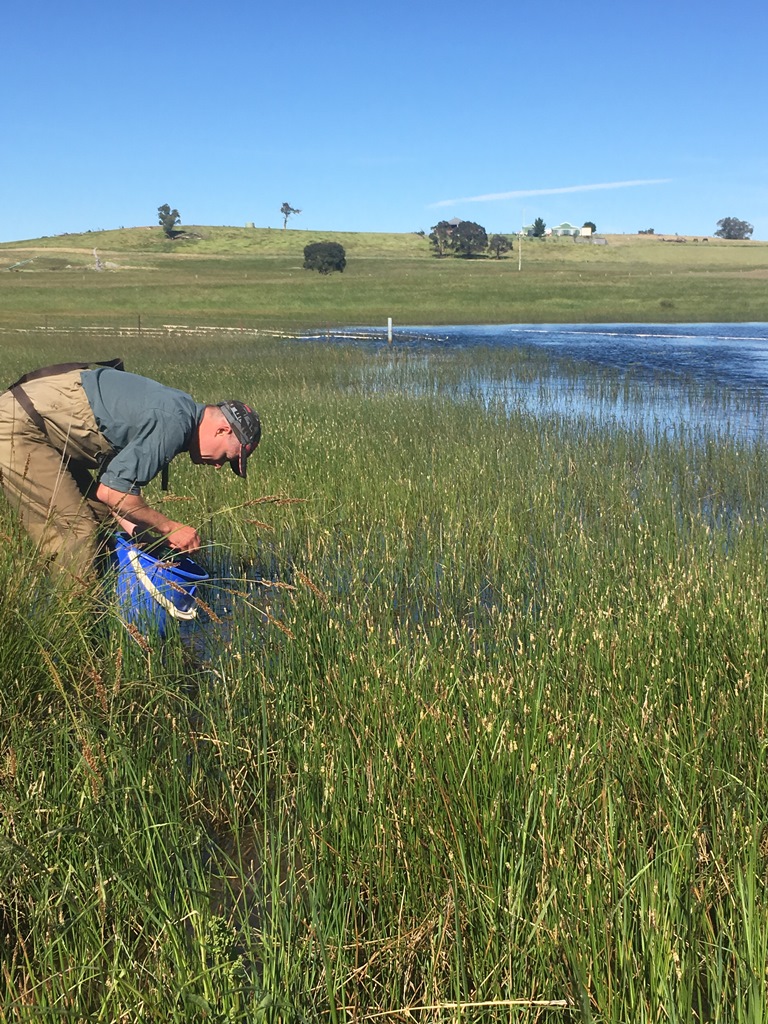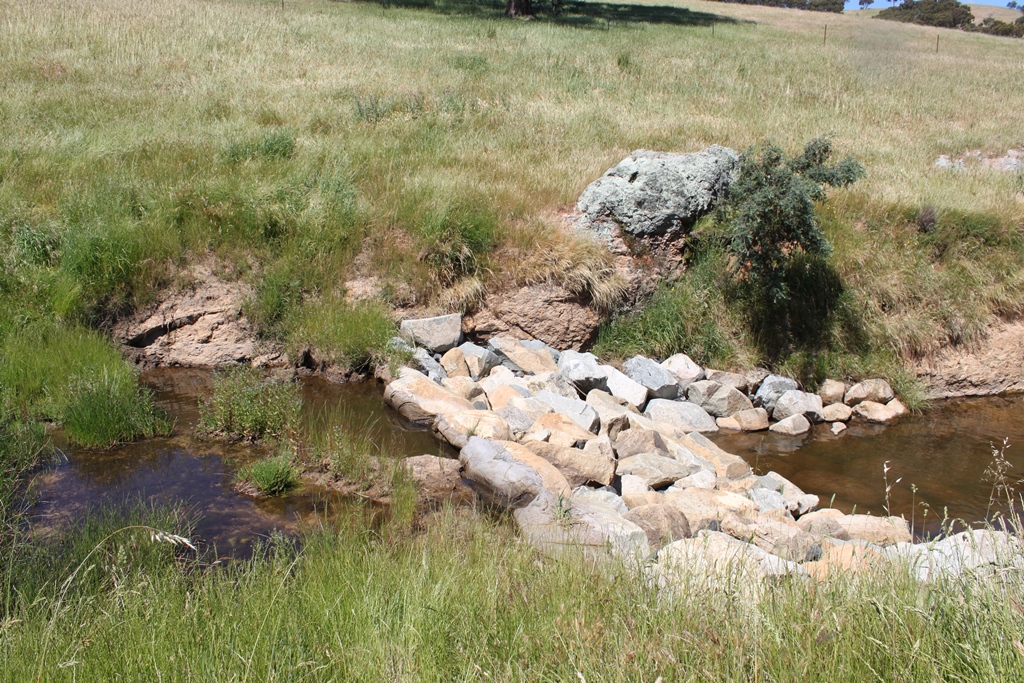Three sites were sampled at Pudman Creek - the original stocking location, which was stocked in 2010 and two sites upstream. 10 adults were found at the original stocking location, 3 from the next site (including evidence of successful spawning) and none were found at the next site upstream. This shows good persistence at the original stocking location and that the SPP have dispersed at least 3 km upstream and have successfully spawned there this season.
Two refuge dams, originally stocked with 112 SPP in February 2015 were sampled. In the first dam, 151 SPP of two year classes were found. Some would have spawned this spring and some were one year old fish from last year. This is a very encouraging result and boasts well for what we are trying to do with these sites. Only 7 SPP were found in the second refuge dam, but again of both year classes, so this indicates at least two successful spawning events. Both dams are very different which may give us some insight into what characteristics we should be looking for in future sites. Interestingly, no larger fish from the original stockings were captured at either site, which highlights how reliant this species is on annual recruitment.
A large dam on the top of Oolong Creek was sampled which has ideal SPP habitat, unfortunately no SPP were found, only Mountain Galaxias. It does however present itself as an ideal site for further translocations.
A Redfin barrier, constructed at Urumwalla Creek has sustained some flood damage, but has held up relatively well given the magnitude of flow that has been over it. SPP were found both above and below the barrier. No redfin, a major predator of SPP, were found which was very pleasing.
Overall, results of the visit were very encouraging and we are certainly moving towards our goal of increasing the numbers of Southern Pygmy Perch in this region. Unfortunately Luke did not hear or see any bell frogs and this was the first trip where he has not.




